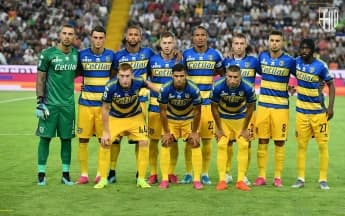From humble beginnings to top-flight battles, Al Hazem’s journey embodies passion, perseverance, and the unyielding spirit of Saudi football.
Introduction
Founded in 1957 in the heart of Ar Rass, Al Hazem Football Club has carved out a legacy of resilience and determination in Saudi Arabian football. What began as a modest local team named Shabab Ar Rass has evolved into a club that defies expectations, battling against financial constraints and fierce competition to secure its place in the Saudi Pro League.
With a history spanning over six decades, Al Hazem’s story is one of struggle, triumph, and an unwavering commitment to football excellence. The club’s red, yellow, and blue colors symbolize not just a team but a community’s pride—a beacon of hope for underdogs in a league dominated by financial giants.
This deep dive into Al Hazem’s journey explores its early struggles, domestic triumphs, iconic rivalries, and the challenges that have shaped its identity. More than just a football club, Al Hazem represents the relentless spirit of Saudi football—where passion and perseverance often outweigh financial muscle.
Early Years: Laying the Foundation (1957-2004)
Birth of a Club
Al Hazem’s origins trace back to 1957 when it was established as Shabab Ar Rass, a community-driven club representing the youth of the Al-Qassim region. Football in Saudi Arabia was still in its developmental stages, and the club’s early years were defined by local tournaments and grassroots engagement rather than national glory.
Rebranding and Ambition (1966 Onwards)
In 1966, the club underwent a pivotal transformation, adopting the name Al Hazem—a moniker that would come to symbolize grit and determination. This rebranding marked a shift in ambition, as the club sought to expand beyond regional competitions and make its mark in Saudi football’s growing landscape.
The Long Road to Recognition
For decades, Al Hazem competed in lower divisions, slowly building a reputation as a competitive side. The 1980s and 1990s saw gradual progress, with the club investing in youth development and infrastructure. Though promotion to the top tier remained elusive, the foundation was being laid for future success.
Domestic Dominance: Rise to the Saudi Pro League (2004-Present)
Historic Promotion (2004-2005 Season)
The 2004-2005 season marked a turning point as Al Hazem secured promotion to the Saudi Pro League for the first time. This achievement was a testament to years of perseverance, proving that even smaller clubs could compete among the nation’s elite.
Survival and Relegation Battles
Life in the Pro League was far from easy. Financial constraints meant Al Hazem often relied on homegrown talent rather than expensive signings. Despite spirited performances, relegation battles became a recurring theme. The club suffered demotion in the 2013-2014 season, a setback that tested its resolve.
Triumphant Return (2020-2021 Season)
Al Hazem’s resilience shone brightest in the 2020-2021 season, when they clinched the Saudi First Division title, securing an immediate return to the top flight. This victory was more than just promotion—it was a statement of intent, proving that the club could rebound stronger than ever.
King’s Cup and Domestic Campaigns
While silverware has been scarce, Al Hazem has made its presence felt in domestic cups, particularly the King’s Cup, where they’ve pushed top-tier clubs to their limits. Their spirited performances in knockout competitions have earned them respect across Saudi football.
Iconic Matches and Fierce Rivalries
Regional Derbies: Al-Najma & Al Taawoun
As a club rooted in Al-Qassim, Al Hazem’s fiercest clashes come against regional rivals like Al-Najma and Al Taawoun. These matches are more than just games—they’re battles for local pride, often played in front of passionate, packed stadiums.
Giant-Killing Performances
-
2014-2015: Holding Al Hilal to a Draw – A disciplined defensive display against the league giants showcased Al Hazem’s tactical resilience.
-
2020-2021 King’s Cup: Pushing Al Nassr to the Limit – Though defeated, Al Hazem’s fearless approach against one of Saudi Arabia’s biggest clubs won admiration.
Emerging Rivalries in the Pro League
As Al Hazem establishes itself in the top division, rivalries with mid-table clubs like Al Fateh and Al Raed have intensified, adding new chapters to the club’s competitive legacy.
Challenges and Comebacks: The Spirit of Al Hazem
Financial Constraints & Overcoming Odds
Unlike Saudi Arabia’s football powerhouses, Al Hazem operates on a modest budget. Yet, their reliance on local talent and shrewd management has allowed them to compete against wealthier opponents.
Relegation and Redemption
The club’s ability to bounce back from relegation—most notably in 2020-2021—highlights its never-say-die attitude. Each setback has been met with a stronger comeback, reinforcing Al Hazem’s reputation as a fighter.
Grassroots Impact & Community Role
Beyond the pitch, Al Hazem plays a vital role in nurturing Saudi football’s next generation. Its youth academy continues to produce talents who contribute not just to the club but to the national football ecosystem.
Influence on Saudi Football: A Legacy Beyond the Pitch
Al Hazem’s impact extends beyond results:
✔ Developing Local Talent – A breeding ground for future Saudi stars.
✔ Enhancing League Competitiveness – Proving that smaller clubs can challenge the elite.
✔ Inspiring Underdog Stories – A symbol of hope for aspiring clubs across the kingdom.
Conclusion: The Future of Al Hazem
As Al Hazem enters a new era in the Saudi Pro League, the club’s journey remains a testament to the power of perseverance. With a loyal fanbase, a commitment to youth development, and a history of overcoming adversity, Al Hazem is more than just a football team—it’s a symbol of Saudi football’s enduring spirit.
The road ahead may be tough, but if history is any indication, Al Hazem will continue to fight, inspire, and prove that in football, heart often triumphs over wealth.
Final Thought:
"Al Hazem isn’t just a club—it’s a story of resilience, written in red, yellow, and blue."
Would you like any additional refinements or focus on a specific aspect of the club’s history?







